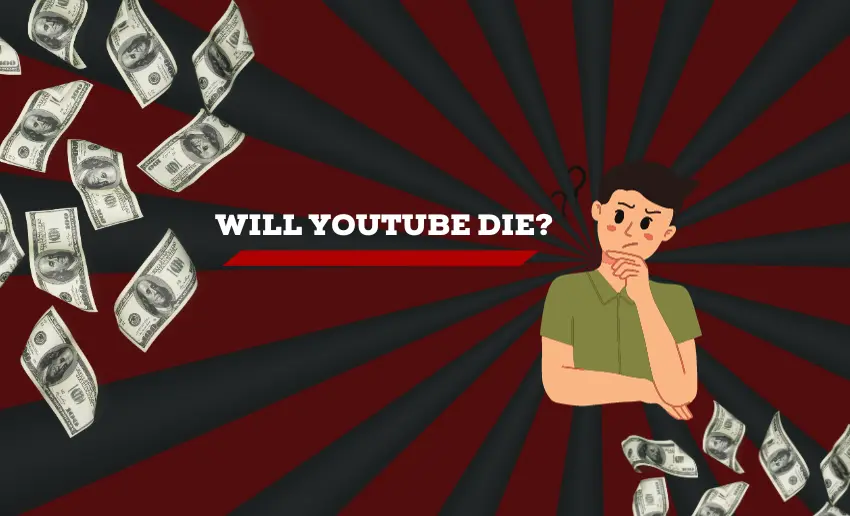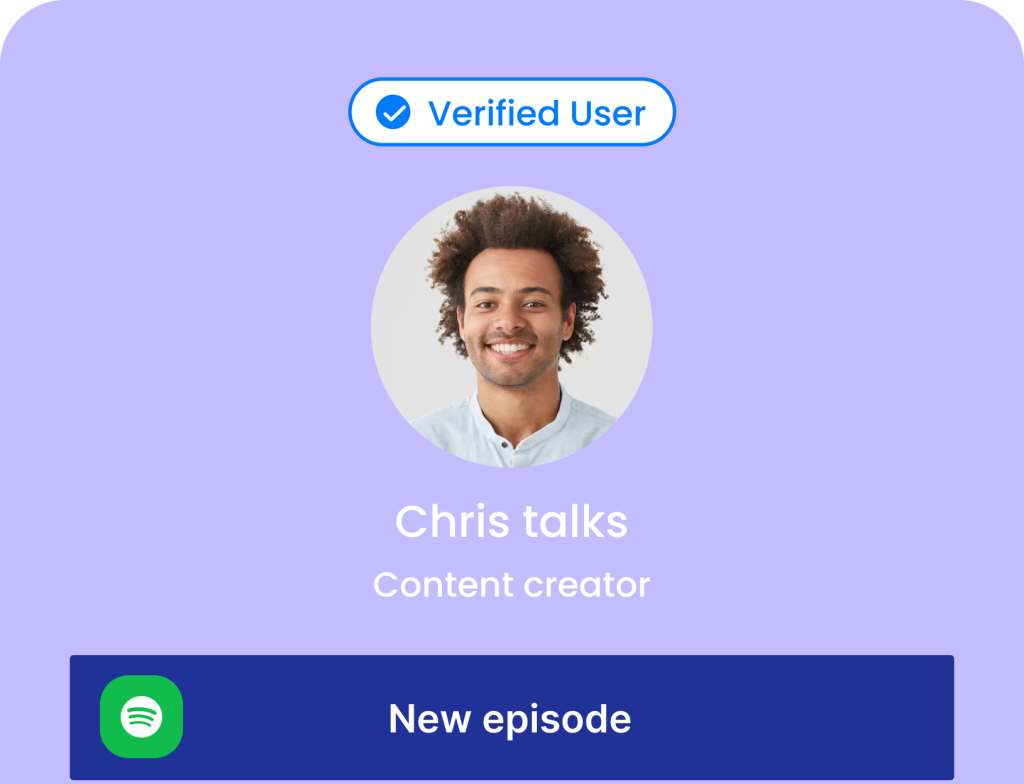The internet is never stagnant, and new trends and platforms pop up faster than you can say “subscribe.” With such lightning speed, a question that has been circulating lately is: will YouTube survive the test of time? Is YouTube dying or growing? Or, to aptly put it, will YouTube die?
This popular video-sharing giant has been an integral part of our digital lives for years. Still, as newer competitors rise and technology evolves, it’s natural to wonder about its future. To help you get answers, this piece will take a look at the factors influencing YouTube’s fate. In the end, you should be able to know whether YouTube is here to stay or on the verge of fading into the digital sunset.
Will YouTube ever die?
It’s impossible to predict whether or not YouTube will die in the future. However, the outcome depends on several factors, such as technological advances, competition, user preferences, and YouTube’s ability to stay ahead of the game. History shows that YouTube has been through ups and downs, showcasing remarkable resilience and adaptability. So, rest assured, YouTube isn’t vanishing anytime soon.
Regardless, one conceivable way for YouTube to fade away is if it loses profitability and another platform steals the spotlight. However, the chances of this occurring are slim, given YouTube’s robust infrastructure for user-generated video content. However, over the years, many have tried to dethrone YouTube as the king of video platforms. Some managed to create a buzz initially but eventually faded into the shadows.
To pose a real threat to YouTube, a platform would need substantial backing, which isn’t a simple feat. Considering this, it’s evident that YouTube will maintain its dominance in the world of user-generated video content for a very long time.
7 Reasons YouTube won’t die now
YouTube’s ability to remain relevant is attributed to its adaptability and willingness to embrace emerging trends:
1. YouTube Shorts
YouTube Shorts is a short-form video feature that has helped the platform stay relevant. It’s a response to the growing popularity of short videos on platforms like TikTok. By introducing Shorts, YouTube tapped into the trend, enabling users to create and enjoy short, engaging videos.
This feature caters to the changing preferences of users who may not always have the time or attention span for longer content. It’s a strategic move to keep the audience engaged and prevent them from migrating to other short-video platforms.
2. Premium content and subscription models
YouTube offers premium content through its subscription models like YouTube Premium and YouTube TV. With YouTube Premium, users can access ad-free content, exclusive shows, and offline downloads. YouTube TV provides access to a variety of live, linear channel streams and on-demand content sourced from 100+ television networks, encompassing affiliates of major broadcast networks like ABC, NBC, and CBS.
Additionally, it offers content from 30+ over-the-top (OTT) services and incorporates a cloud-based digital video recorder (DVR). These subscription services not only generate revenue but also enhance the user experience by providing additional value. They keep users invested in the platform and are less likely to switch to competitors.
3. Engaging with content creators
YouTube has maintained its relevance by fostering strong relationships with content creators. The platform offers monetization options, like ad revenue sharing and channel memberships, which incentivize creators to continue producing content. YouTube also offers resources and support to help creators succeed, further solidifying their loyalty to the platform. This mutually beneficial relationship ensures a constant stream of fresh, high-quality content that keeps viewers engaged.
4. Integrations with other services
YouTube has integrated its services with others, like YouTube TV. By offering live television streaming, YouTube expanded its utility beyond user-generated content. This integration keeps users within the YouTube ecosystem, making it a convenient hub for a wide range of video content. Such integrations enhance user engagement and retention, as users can access a variety of content from one place.
5. Live streaming and interactive features
Live streaming has become increasingly popular, and YouTube has embraced this trend. It allows content creators to engage with their audience in real-time, creating a sense of community. Interactive features like live chat and Super Chats (which allow viewers to pay to have their comments highlighted) add depth to the user experience. Live events, such as product launches and music concerts, are often streamed on YouTube, making it a go-to platform for live content.
6. YouTube’s social media presence
YouTube actively maintains a presence on other social media platforms. Sharing and promoting content on platforms like Twitter, Facebook, and Instagram helps increase the visibility of YouTube videos. This cross-promotion keeps users engaged and reminds them to return to YouTube for more content. By remaining active on various social channels, YouTube can connect with its audience where they have already spent time.
7. Favorable advertising model
YouTube’s advertising model is attractive for both advertisers and content creators. Advertisers can reach a vast and diverse audience, while content creators can earn revenue through ad placements. This model incentivizes creators to produce quality content and draw in more viewers. It also ensures that the platform remains financially viable, allowing it to continue providing a free service to users while offering premium options.
When will YouTube die?
While it’s challenging to make definitive predictions, YouTube’s future depends on its adaptability. YouTube has been around for over a decade, building trust with users and creators. Newcomers often struggle to establish this trust and reputation. Although YouTube has shown extraordinary resilience to changes, it is still not immune. Here are some factors that impact its chances of surviving in the future:
1. Other video-sharing platforms
The presence of other video-sharing platforms poses a challenge to YouTube’s future. While YouTube has been a dominant player, competitors like TikTok, Instagram, and emerging platforms have gained popularity. The question “will YouTube die?” arises because users may shift to alternatives if they offer unique features or content.
2. The rise of short-form video platforms
Short-form video platforms, epitomized by TikTok, have risen in popularity. Users increasingly favor quick, engaging content. YouTube has responded with features like Shorts, but the competition raises concerns about YouTube’s continued relevance.
3. Impact of AI and machine learning
AI and machine learning influence content recommendations, ad targeting, and moderation. YouTube’s ability to harness these technologies can impact its future. They play a crucial role in delivering the right content to users and ensuring a safe environment. Failure to adapt may affect whether YouTube remains a thriving platform or declines.
4. Changing video formats
Video technology has evolved with formats like 4K and virtual reality (VR). YouTube must stay updated with these trends. Failure to do so may make users question the platform’s longevity, especially if it falls behind in delivering high-quality and immersive experiences.
5. Copyright and intellectual property issues
Copyright disputes and intellectual property issues have been long-standing challenges for YouTube. These issues raise concerns about its future. Handling them effectively is crucial, as unresolved problems could impact the platform’s existence.
6. Content moderation and user policies
Content moderation and user policies are paramount in creating a safe and inclusive environment. YouTube’s ability to strike a balance between freedom of expression and responsible content management is pivotal. How well it manages this impacts its survival.
7. Shifts in video consumption habits
Users’ video consumption habits continually change. Whether it’s binge-watching, live streaming, or micro-moments, YouTube needs to adapt. Failing to keep pace with evolving habits could affect its survival in the competitive digital video landscape.
8. The role of mobile devices
Mobile devices are primary tools for accessing video content. YouTube must optimize its mobile experience to remain relevant. Neglecting mobile users could determine whether YouTube thrives or becomes less appealing, influencing the question, will YouTube die.
Is YouTube dying or growing?
YouTube is not dying anytime soon even with growing competition. Although several factors continue to impact YouTube’s survivability, the platform equally has sufficient reasons to keep it afloat for a long time to come. Below are some reasons YouTube has an excellent chance of surviving:
1. Vast user base
YouTube boasts a massive audience worldwide, and this widespread user base provides a strong foundation. Many people find content they love, and this keeps them coming back. The more users, the more content creators are attracted, making it a self-reinforcing cycle.
2. Diverse content library
YouTube offers a wide range of content, from educational videos to entertainment. This variety makes it a one-stop shop for users with different interests. Competing platforms may specialize in one type of content, but YouTube’s diversity sets it apart.
3. Monetization opportunities
YouTube’s monetization features, like ads and the Partner Program, attract content creators. This means more quality content for users. Competitors often struggle to match YouTube’s revenue-sharing capabilities. Popular examples include MrBeast and PewDiePie, who have amassed substantial wealth during their YouTube careers.
4. Google backing
YouTube is owned by Google, which provides strong financial backing and technical support. This backing allows YouTube to invest in innovation and stay at the forefront of technology trends.
5. Global reach and technical infrastructure
YouTube is accessible worldwide, offering content in multiple languages. This global approach gives it an edge over regional competitors. A platform’s ability to cater to diverse audiences is essential for its survival.
YouTube’s infrastructure is robust and capable of handling a vast amount of video data. This reliability is a key factor in retaining users and content creators, especially during peak usage times.
6. Constant innovation
YouTube continuously introduces new features like YouTube Shorts and YouTube Premium. This innovation keeps users engaged and encourages content creators to stay.
7. Data and analytics
YouTube provides creators with comprehensive data and analytics tools to understand their audience. This transparency is a valuable feature not always matched by competitors.
Who will replace YouTube?
YouTube has a vast and loyal user base, and it remains a dominant force in the online video-sharing space. However, new platforms and competitors continue to emerge and gain traction, such as:
1. TikTok
TikTok has taken the online world by storm with its short video format. It’s more than just dance routines; TikTok hosts a variety of content, from music and sports to handy how-to guides. What sets it apart is the array of effects, sounds, and filters that creators can use to spice up their videos. Successful content makers even earn money through sponsorships and brand deals. But the real magic is in its ever-growing community of creators who continue to churn out captivating content. Plus, you’ve got a treasure trove of free music and sounds to customize your videos as you like.
2. Vimeo
Vimeo offers a YouTube-like experience without the nuisance of ads. You can watch videos here without those pesky advertisements interrupting your viewing pleasure. Unlike YouTube, there are no ads at the start or popping up mid-video. Content creators on Vimeo have shifted their focus to earning through a ‘Video-on-demand’ model after the removal of the ‘Tip Jar’ feature.
3. Twitch
If you’re a gaming enthusiast eager to share your gameplay, Twitch is your go-to platform. It’s a hub for video game streaming. Twitch allows users to stream their gaming sessions with top-notch quality. While it may not be as lucrative as YouTube, you can make some extra cash, especially with pre-recorded videos. To become an affiliate on this platform, you need a minimum of 500 minutes of live broadcasts within the last month, along with three viewers, seven unique broadcasts, and at least 50 followers. It’s a gaming haven for those looking to explore the world of live streaming.
In the End
The question of whether YouTube will die is not easy to answer definitively. YouTube’s future depends on its ability to adapt to the evolving digital landscape. It has proven resilient in the face of competition and challenges in the past, and its continuous innovation keeps it relevant. However, YouTube must navigate regulatory issues, technological advancements, and shifting user preferences. While new platforms emerge, YouTube’s legacy and the strength of its community make it likely to evolve rather than disappear entirely.








